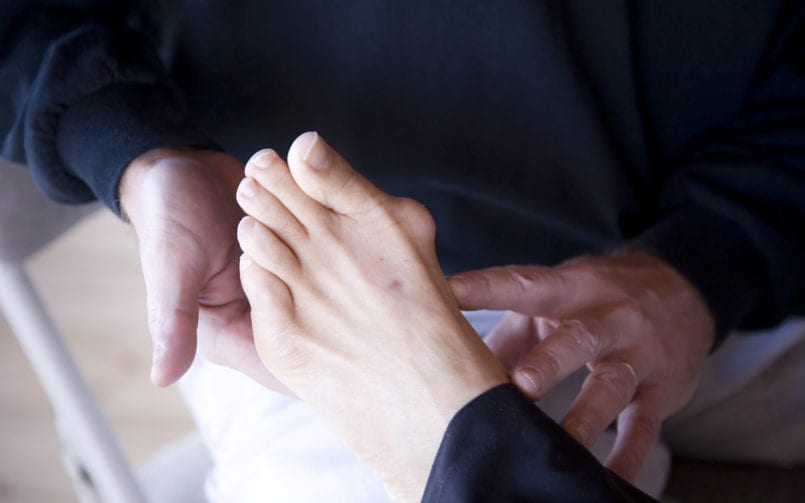
Non-Surgical Ways to Treat Bunions
A bunion, or hallux valgus, is a slowly developing bump on a person’s big toe joint. It creates pressure on the big toe, which forces the toe to move and changes the bone structure of the affected foot over time. Untreated, bunions can become quite large, causing the first three toes to grow out of alignment and creating calluses from constant friction. Many people opt for surgery to remove these growths and realign their feet, but there are non-surgical options to treat a bunion and keep your foot health in check.
Change Your Footwear
A common cause of bunions is incorrect shoe size. Try wearing a bigger shoe to alleviate some of the foot pain. Wearing wider shoes could help too. Women are 10 times more likely to suffer from bunions than men, primarily due to the narrow heels women commonly wear which put unwanted pressure on the bones in their feet. Your doctor can provide advice on what type of shoe will be right for you. Consider adding orthopedic inserts to your shoes as well to decrease pressure, or use padding and toe spacers to prevent calluses.
Manage Your Pain
Bunions are painful to walk on, and over time the foot is likely to swell. To decrease inflammation and overall pain, take a pain reliever throughout the day. When you’re at home, ice the affected foot to help with the swelling. If it persists, ask your doctor about cortisone injections.
Tape Your Foot
Your doctor can show you how to tape your foot to keep it in a normal position. Using a splint while you sleep is also an option meant to relieve pain by holding your big toe straight.
Try Physical Therapy
A physical therapist can be consulted about your foot health if these options aren’t doing enough for you. A therapist can give you personalized suggestions such as regular massages, using heat, or stretches for your foot.
It is important to note that sometimes surgery is the only way to fix your bunion and relieve your pain. If the above does not make your pain more manageable and your bunion is preventing you from living your life normally, it’s time to consider surgical options to return to better foot health.